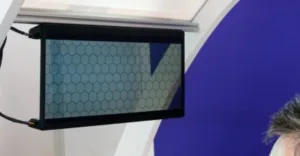This is the second of, at least, two ’round-ups’ that I am producing to show some of the things that intrigued me or were novel. It’s a very unscientific sample of what I saw and what was there! As most of the ‘gadget press’ has been talking about the big brands, I have focused on some less well reported topics.

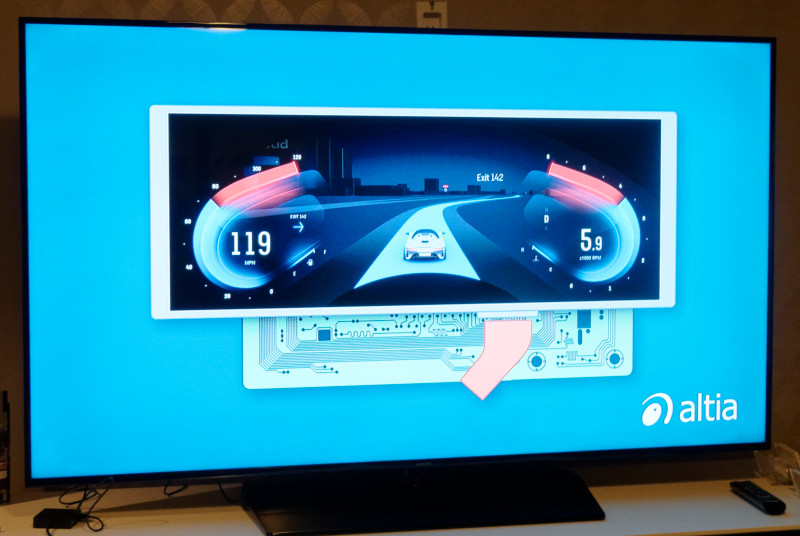 Altia helps auto makers create GUIs using a range of different chips. Image:Meko
Altia helps auto makers create GUIs using a range of different chips. Image:Meko
Automotive is a big topic at CES and I dashed around the North Hall and saw some interesting concepts and products. However, I also went to a suite to meet with Altia, a company that we had not spoken with before. The company develops software that can create the kind of instrument displays that auto makers want on their vehicles. The company believes that its graphics are in around 100 million autos, the ‘middle 80%’ of the market, as the company puts it. Part of its skill is to be able to get a family look to interfaces across a range of different power processors.
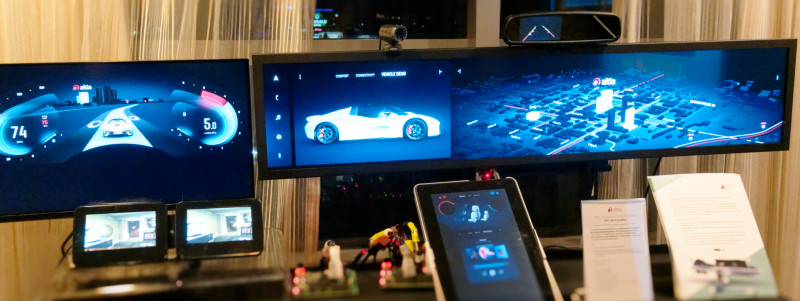 Altia can support a wide variety of displays. Image:Meko
Altia can support a wide variety of displays. Image:Meko
The key for the company is to achieve the look and feel wanted by designers within the constraints of the CPUs (from ST, NXP and Renesas) that the auto makers want to use. At the show it had one 1920 x 720 cluster, one 1080 x 1920 combined multimedia and HVAC, one 3840 x 720 passenger display, one rear-view mirror and two side-view mirrors software – all running on two NXP i.MX 8 QuadMax processors. Increasingly, the designers want real-time 3D and are also working hard to see how to optimise the data shown in HUDs.
As well as automotive applications, the company produces GUIs for applications including medical devices. This is another application where limited hardware needs to be used to create very efficient and well designed human/machine interfaces.
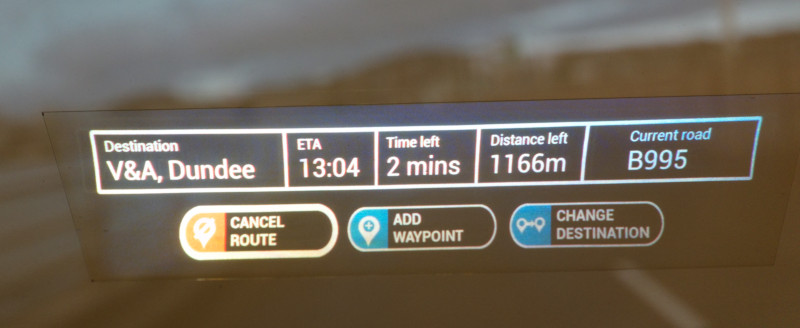 The Ceres film is designed to be sandwiched in a windscreen. Image:Meko
The Ceres film is designed to be sandwiched in a windscreen. Image:Meko
2020 While on the topic of automotive, we met with Ceres Holographic of St Andrews in Scotland. The company has developed a special screen to display holographic images in HUDs and at the show it was in the TI partner demonstration area. The technology is based on a film and is designed to be integrated into a windscreen as a diffuser. The based on holographic elements (16 per mm²) that are designed to be wavelength sensitive. Light that is not at the design wavelength passes through the element, but light of the correct frequency is shown on the screen. The display shown at CES had a field of view of 14 deg x 4 deg with an eye box of 200 x 140mm. Brightness of the demo was >20K cd/m². The HUD volume (it was a DLP, of course, in the TI booth, but could be any other imaging device) is just 0.5 litres. The company is working with all the ‘Tier 1’ suppliers in automotive (except Continental which has its own approach).
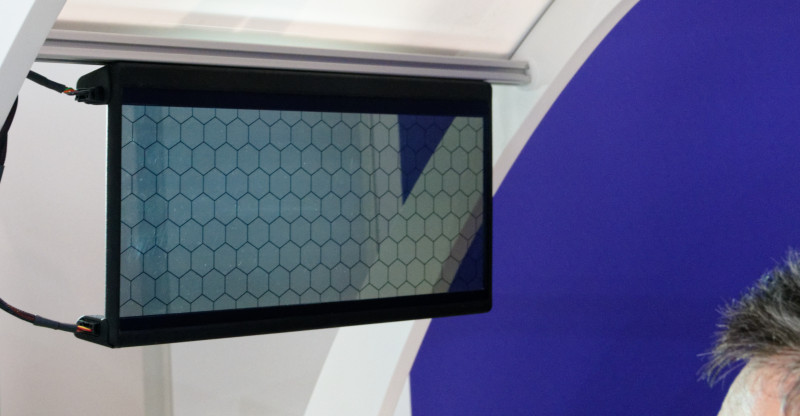 Bosch had this LCD sun visor which can be selective in blocking light. Image:Meko
Bosch had this LCD sun visor which can be selective in blocking light. Image:Meko
I didn’t stop for a chat, as I was on my way to a meeting, but I spotted that Bosch was showing an interesting LCD-based ‘virtual visor’ which uses LC technology to block the areas where the sun is passing through to the driver’s eyes. Unlike a regular visor, it is dynamic and can be transparent when it is not needed.
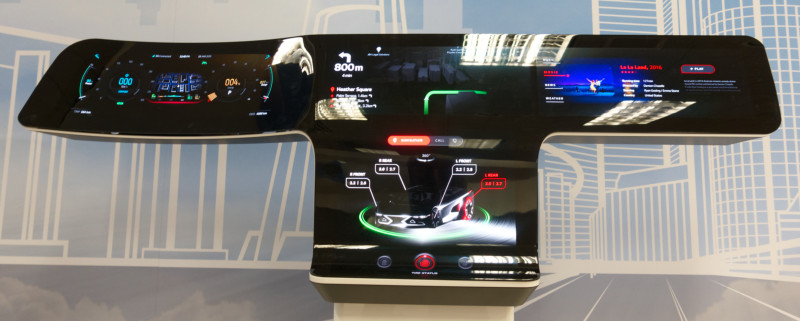 LG Display will put its automotive POLED displays into production this year. Image:Meko
LG Display will put its automotive POLED displays into production this year. Image:Meko
LG Display had its usual impressive private suite of demonstrations. We had a whistle-stop tour, but the automotive OLEDs impressed me in particular. The company will be in mass production shortly and is optimistic that it can achieve qualification for automotive use, a big barrier to the use of the technology, so far. The 14″ cluster display is 27:9 and has 2416 x 816 format, 750 cd/m2 of output and 750R. The centre fascia display is a 10:9 aspect with 1888 x 1728 format and 500R (Convex) and 50R (edge bent). The CID is 12.3″ and is 24:9 with 2400 x 900 aspect and a 500R concave curve. The cluster goes into production in Q2 and the CID in Q3. The 2021 Cadillac Escalade uses a large LG OLED and is due to be launched on February 4, 2020 in LA
Keyssa is a semiconductor company that has been set up to exploit developed by Silicon Image, which was subsequently acquired by Lattice. The technology uses very close (effectively, touching or very nearly) connections. Unlike NFC, it is very high bandwidth – up to 6Gbps in each direction. It calls the technology ‘Kiss Connectivity’. At CES, a new application was the wireless connection of LED cabinets without any cables. That makes set-up simpler and the look and design of the cabinets much cleaner.
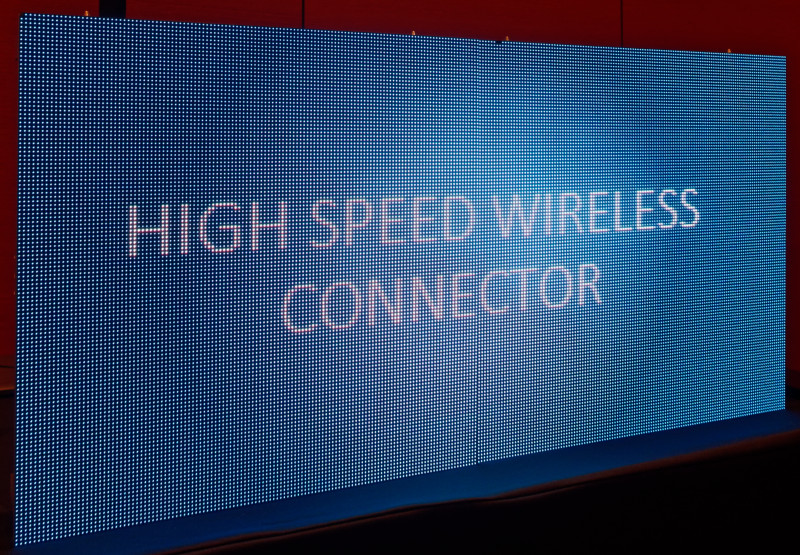 Keyssa’s wireless connections can be used to connect LED cabinets. Image:Meko
Keyssa’s wireless connections can be used to connect LED cabinets. Image:Meko
The Keyssa technology was being used in a real product on the show floor. The LG Dual Screen case uses pogo connectors to identify and power a second display on the LG50 smartphone. However, the display connection is provided by Keyssa between the edge of the V50 and the case.
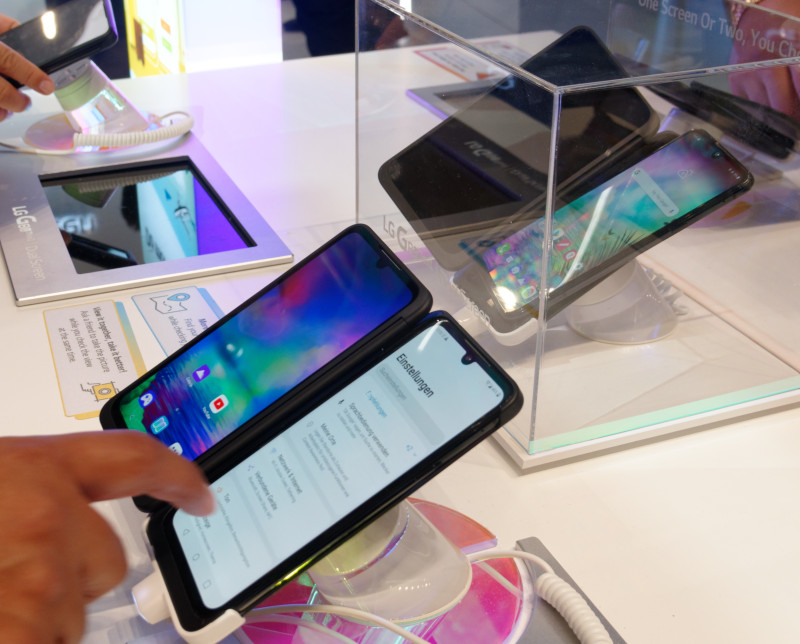 Keyssa’s chip is already being used to connect the second screen on the LG V50. Image:Meko
Keyssa’s chip is already being used to connect the second screen on the LG V50. Image:Meko
One of the intriguing applications of the Keyssa technology was the transmission of data across a piece of plastic!
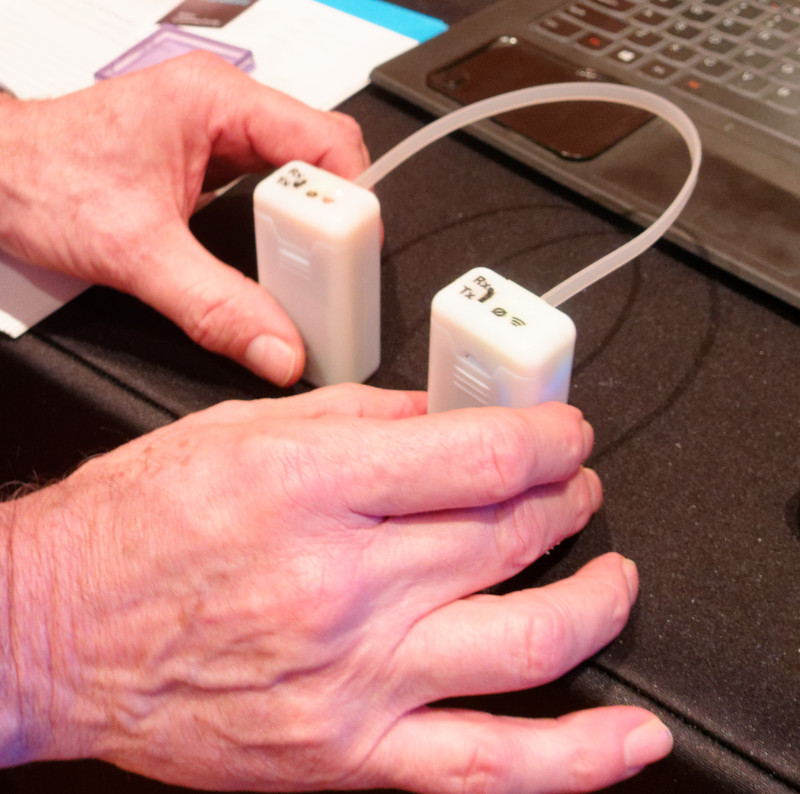 Keyssa’s technology works across plastic! Image:Meko
Keyssa’s technology works across plastic! Image:Meko
I’m planning at least one more round-up based on IT products – notebooks and monitors – from CES 2020 in the next couple of weeks. (BR)

